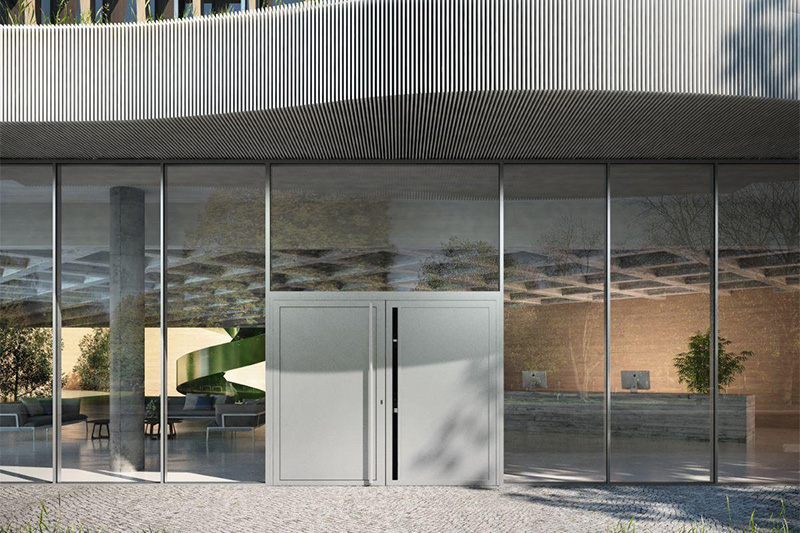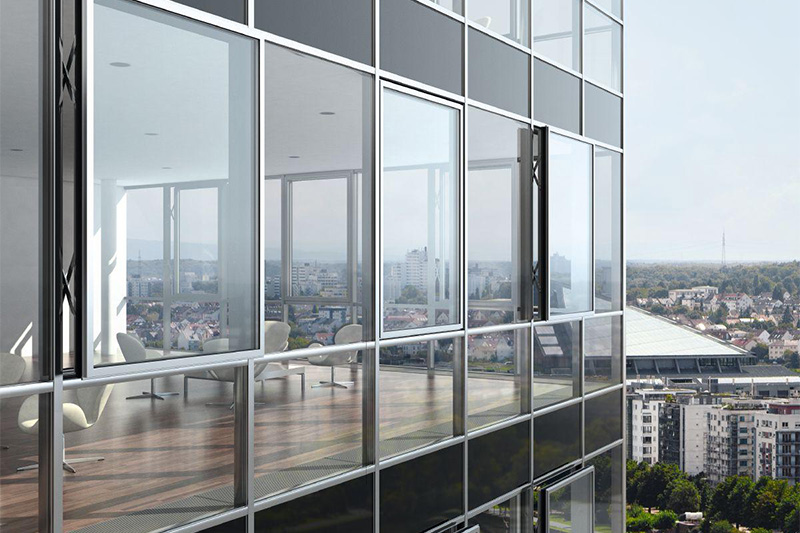If you are looking to start a curtain wall project yet have not decide which technique, when figure out the ideal info, narrowing down the choices that will fit your target. Why not take a look at the below, to learn if a unitized curtain wall or stick-built system is right for your task.
What is a curtain wall and also why are they so preferred in architecture today?

Curtain wall is an independent as well as structurally independent system that typically cover over a distance of several stories. They are described as lightweight non-structural outer wall surfaces, are frequently aluminum-framed and also contain in-fills of glass, metal panels, or slim stone. These specific wall surfaces are not made to be structurally bearing other than under their own weight.
It is because of their lack of structural integrity that they can be crafted out of cosmetically pleasing light-weight materials, such as glass, that coincidentally also happen to be well matched to resist important pressures such as wind, water and also seismic activity. They are particularly developed to hold up against with the supporting framework and can be personalized to match virtually any type of job. The pliability as well as durability of drape walls under the range of such stressors makes them an extremely regarded building choice, particularly for high as well as otherwise cumbersome frameworks where adaptability is should have. Glass walls are specifically popular in today's frameworks, mostly partially to the natural light infiltration aspect.


There are two usual kinds of drape wall surfaces, both of which are instead comparable in numerous facets including their flexibility, strength as well as customizability, however it is the method which they are fabricated and also mounted that eventually identifies them as either "stick-built" or "unitized" (also referred to as "modular") curtain wall surface systems.
Stick-Built Systems - As the name recommends, "sticks" (expanded pieces of aluminum) are put vertically and flat in between floorings, constructing the structure (mullions) that will later be utilized to support the enclosing panels. Stick constructed systems are commonly discovered in vertical and polygon exteriors, and while they may work well for many of these jobs, one of the best downfalls to this method is that a variety of processes are needed to erect the walls.
In order to set up a stick-built drape wall, each panel device have to be connected and secured piece-by-piece, which indicates even more time-- estimated as much as 70% of the job-- is spent doing so on the building site. This method, usually, needs a team of skilled installers to stay on website, which can be not only time consuming, however costly. Additionally, the top quality of stick-built systems can be greatly impacted by things like the regional atmosphere as well as on website handling.


Unitized Curtain Systems (also known as Modular Systems) - Alternatively, unitized drape systems, regularly described as "modular systems," are big glass devices, usually about one story tall. Unitized systems are repetitively applauded for their quick setup prices, which can be approximately one-third of the time it takes for stick-built systems, as well as their phenomenal top quality. The panels are pre-fabricated and also assembled prior to arrival; this allows for rapid setting up on website as the panels will only call for raising into their defined place. Ultimately, the top quality of these panels are a lot easier to control as most of the setting up as well as handling occurs where they were produced, in a controlled setting.
This method takes advantage of the rate and high quality of prefabrication strategies, reducing installment time as well as calling for fewer skilled laborers on the job website, in general, this can drastically lower job site prices. Modular systems are often utilized on huge quantity projects, consisting of those with greater field labor costs as well as where greater efficiency product is a need.


However the inquiry still stays, should you utilize a unitized curtain wall surface or a stick-built drape wall surface?
While there is no "one size fits all" solution to this concern, for bigger, taller and higher-quality tasks, the solution will likely be a unitized drape wall surface. If you are a professional or engineer that likes a fast, smooth as well as competitively-rated task the first time around, the unitized drape wall system can not be matched.
Yet, whatever you pick, there is no argument that curtain wall surfaces not just look great, they are extremely effective at what they do. Crafted for design and also endurance, it is no surprise just how curtain wall surfaces have come to be such a popular layout function seen above end structures as well as frameworks found throughout the globe.
If you are looking to start a drape wall surface task however have not yet devoted to the concept of making use of a unitized or stick-built method, worry not. Keep reading below to find out if a unitized drape wall surface or stick developed system is right for your task.


Curtain Walls - Curtain wall surfaces are an independent and also structurally independent system that usually cover over a distance of several stories. In order to install a stick-built drape wall, each panel unit need to be attached and also secured piece-by-piece, which indicates even more time-- approximated up to 70% of the project-- is invested doing so on the building and construction website. Unitized Curtain Systems (also known as Modular Systems) - Alternatively, unitized drape systems, regularly referred to as "modular systems," are huge glass units, commonly concerning one tale high.
So all in all, what do you think about the curtain wall? share your ideas in the comment.
Post time: Dec-13-2023

